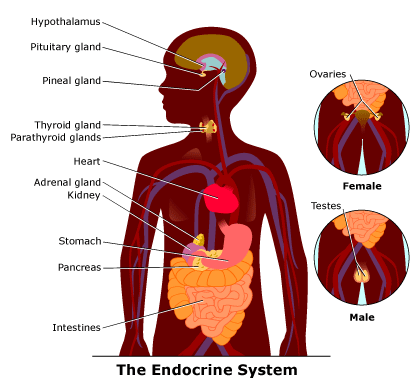26
Apr
Endocrine Disruptors Lead to Female Reproductive Disorders Costing Billions
(Beyond Pesticides, April 26, 2016) A study published last month finds that exposure to endocrine-disrupting chemicals (EDC) plays an important role in the development of certain female reproductive disorders, and ultimately results in significant economic costs to society. The study, published in the Journal of Clinical Endocrinology &nMetabolism, and authorized by a team of scientists from New York University School of Medicine and Washington State University’s School of Molecular Biosciences, looked at the monetary impact of EDC-attributed female reproductive disorders in the European Union (EU). This economic valuation is part of series of analyses undertaken by the research team, which determined last year that over €150 billion ($162 billion) in yearly health care costs in the EU are attributable to the loss of brain function induced by EDCs.
 “There are substantial human and toxicological studies (in mice and other lab animals) that suggest that exposure to these endocrine-disrupting chemicals, many of which are increasing in use, are contributing to female reproductive conditions,” said study co-author Leonardo Trasande, MD, associate professor of pediatrics at NYU School of Medicine to CNN.
“There are substantial human and toxicological studies (in mice and other lab animals) that suggest that exposure to these endocrine-disrupting chemicals, many of which are increasing in use, are contributing to female reproductive conditions,” said study co-author Leonardo Trasande, MD, associate professor of pediatrics at NYU School of Medicine to CNN.
The study found that the strongest data linking EDCs to female reproductive disorders was exposure to diphenyldichloroethene (DDE) resulting in fibroids, and phthalates resulting in endometriosis. Scientists determined that with each of these links, the probability of causation was between 20-39%. Within the EU, attributable cases of DDE-induced fibroids were estimated to be 56,700 and phthalate-induced endometriosis at 145,000. This was calculated to result in €163 million ($183 million) and €1.25 billion ($1.4 billion) in health care costs, respectively.
To come up with these amounts, scientists used a weight-of-evidence characterization for probability of causation developed by the Intergovernmental Panel on Climate Change (IPCC). Peer-reviewed literature was analyzed for exposure-response relationships and reference levels, as well as biomarker data. Exposure patterns and burden of disease were evaluated for the year 2010, and the cost estimation was based on multiple peer reviewed sources and intended to include both direct costs from treatment as well as indirect costs, such as loss of productivity.
DDE is the major breakdown product of DDT (dichlodiphenyltrichloroethane), which, although banned in 1972 in the U.S. and throughout the 70s and 80s in European countries, continues to persist in the environment at levels high enough to result in human health impacts. DDT and DDE have been linked to a number of reproductive and endocrine diseases. A study published in January 2015 found that exposure to persistent organic pollutants like DDE is associated with an earlier start to menopause. Another study published in June 2015 found that in utero exposure to DDT was directly linked to breast cancer later in life.
“Although endometriosis and 56,700 cases of uterine fibroids these two gynecological conditions affect millions of women worldwide, we recognize that this analysis only reflects the tip of the iceberg,” said Dr. Trasande in a release from the Endocrine Society.
Indeed, partly because of their persistence and length at which they’ve been in the environment, there is a good amount of scientific data linking DDE and other historic use chemicals to health impacts. Many newer pesticides and chemicals, for which there is paltry data from government sources, have been found by independent science to be potential EDCs, though have yet to be fully assessed by the U.S. Environmental Protection Agency, despite a statutory obligation.
Beyond Pesticides supports strong protections from pesticides and endocrine disruptors by pushing for regulatory action and the support of alternative products and practices that do not require these chemicals. Through the Eating with a Conscience tool, those concerned about pesticides on their produce and can find out the chemicals that are allowed in their production. The ManageSafe database helps homeowners and renters control household pests without toxic pesticides. And Beyond Pesticides’ Lawn and Landscapes webpage helps property owners manage lawns without the use of pesticides linked to endocrine disruption and other ill health effects. Ultimately, by supporting organic agriculture, with disallows the use of harmful synthetic pesticides, the health burden EDCs and other pesticides put on our economy and individual health can be drastically reduced.
Source: CNN, Endometriosis News, Journal of Clinical Endocrinology and Metabolism
All unattributed positions and opinions in this piece are those of Beyond Pesticides.










